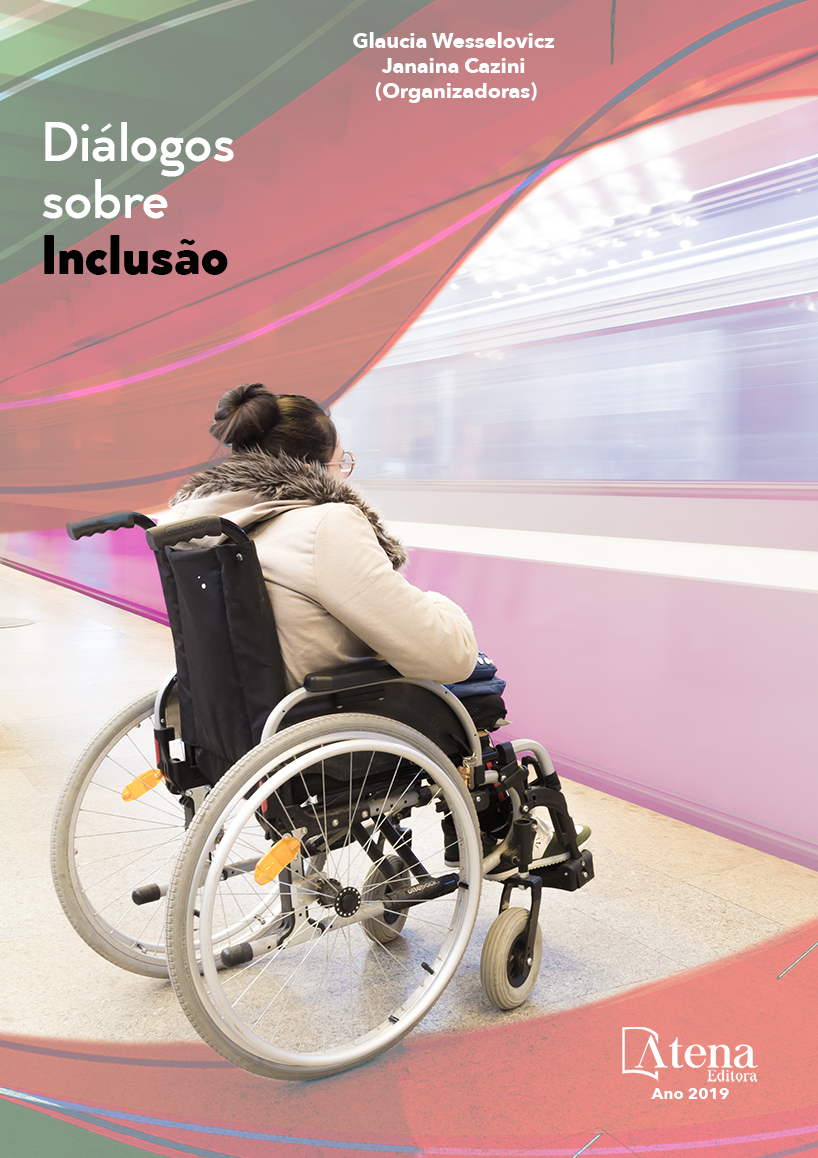
NUSOEP: NÚMEROS, SÍMBOLOS, OPERAÇÕES E EQUAÇÃO DO PRIMEIRO GRAU. UM KIT EVOLUTIVO PARA DE MATEMÁTICA PARA DEFICIENTES VISUAIS
As pessoas com deficiência
apresentaram taxas de alfabetização menores
do que a população total em todas as regiões
brasileiras. Nas três últimas décadas, devido
à criação das leis que estimulam a inclusão,
houve um grande crescimento do número de
alunos com alguma deficiência nas escolas
de ensino básico. Esse processo ainda é um
grande desafio para as escolas regulares e
projetos pedagógicos têm sido desenvolvidos
para preencher as lacunas geradas nesse
processo de inclusão. Em particular, para os
alunos com deficiência visual é fundamental
que os professores tenham o conhecimento
das duas principais vias sensoriais, a saber: a
audição e o tato. A aquisição do pensamento
matemático acontece sistematicamente, ou
seja, só é possível acompanhar um pensamento
se compreender outro. O kit pedagógico
Número, Símbolo, Operações e Equação do
Primeiro Grau (NUSOEP) que utiliza celas
Braille para representar números, símbolos e
um plano-lousa para resolução de equações
foi concebido a partir de diversos materiais,
buscando conectar a característica evolutiva
e sistemática do aprendizado em matemática
com a necessidade de materiais didáticos que
explorem os sentidos tátil e auditivo. Produzido
no Laboratório de Ensino em Matemática
(LABEM) do Instituto Federal de Educação,
Ciência e Tecnologia da Paraíba (IFPB),
Campus Cajazeiras, por alunos do Curso de
Licenciatura em Matemática em colaboração
com deficientes visuais, o NUSOEP se configura
como uma opção metodológica a disposição
de professores, tutores e responsáveis para
promover um ambiente inclusivo, assim
contribuindo para o aprendizado do aluno.
NUSOEP: NÚMEROS, SÍMBOLOS, OPERAÇÕES E EQUAÇÃO DO PRIMEIRO GRAU. UM KIT EVOLUTIVO PARA DE MATEMÁTICA PARA DEFICIENTES VISUAIS
-
DOI: 10.22533/at.ed.62019280514
-
Palavras-chave: Educação inclusiva; Material didático; Deficiência visual; Braille.
-
Keywords: Inclusive education; Courseware; Visual impairment; Braille.
-
Abstract:
People with disabilities had lower literacy rates than the total population
in all Brazilian regions. In the last three decades, due to the creation of laws that
stimulate inclusion, there has been a large increase in the number of students with
disabilities in elementary schools. This process is still a major challenge for the regular
schools and pedagogical projects have been developed to fill the gaps generated in
this process of inclusion. In particular, for students with visual impairment it is essential
that teachers have knowledge of the two main sensory pathways, namely: hearing
and touch. The acquisition of mathematical thinking happens systematically, that
is, it is only possible to follow one thought if it understands another. The Number,
Symbol, Operations and First-Degree Equation (NUSOEP) pedagogical kit that
uses Braille cells to represent numbers, symbols, and a slab plane for solving
equations was designed from several materials, trying to connect the evolutionary
and systematic characteristic of the learning in mathematics with the need for
didactic materials that explore the tactile and auditory senses. Produced in the
Laboratory of Teaching in Mathematics (LABEM) of the Federal Institute of Education,
Science and Technology of Paraíba (IFPB), Campus Cajazeiras, by students of the
Mathematics Degree Course in collaboration with the visually impaired, NUSOEP
is configured as a methodological option for the provision of teachers, tutors and
responsible persons to promote an inclusive environment, thus contributing to student
learning.
-
Número de páginas: 15
- Rodiney Marcelo Braga dos Santos
- Marcos Antônio Petrucci de Assis
- José Nunes Aquino
- Luciene do Carmo Santos
- Kissia Carvalho


